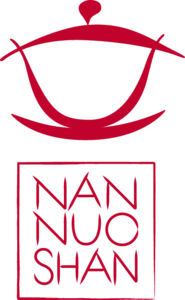
Four sets of dark, twisty leaves, one outlier—this set is quite a challenge, both to identify the similarities as well as the differences. We hope you enjoyed tasting through it and developed your sensitivity to flavor and aroma, even if the contents remained a complete mystery.
Upon brewing, and even with an examination of the dried leaves, the experienced tea drinker will likely have discerned that two of the teas were oolongs and the other two black teas, which may have come as a bit of a surprise. The similarities within the two categories far outweigh those between the two categories, so what could be the thing tying three of them together? If a common tasting note revealed itself, or by process of elimination (or by examining our selection of oolongs and black teas) you guessed that a cultivar was the factor in common, you were right; although if you guessed the terroir, you were technically also right. Our focus here is the particular qualities of this cultivar, but given the tendency to use certain cultivars within a region, the link between the two is not too surprising. Three of these teas have been produced with the floral Qi Lan cultivar in Dashuikeng, and the remainder is a Shui Xian from Xingcun.
Tea #1: Qi Lan
- Meaning: 'rare orchid'
- Origin: Dashuikeng, Wuyishan City, Fujian Province, China
- Cultivar: Qi Lan
- Harvest Time: 20 April 2022
The archetype of this group of teas, the Qi Lan cultivar is historically and most often used for Wuyi yan cha, as in this case. An aroma of galangal and coconut is rather distinctive, while an underlying, cinnamon-like sweetness and a certain round softness in the attack ties it most closely to the black teas below. The fair roasting it has received might be a bit of a distraction, depending on the brewing method, but tasting it cooled can mitigate that effect.
Tea #2: Shui Xian
- Meaning: 'water sprite/narcissus'
- Origin: Caodun, Xingcun Town, Wuyishan City, Nanping, Fujian Province, China
- Cultivar: Shui Xian
- Harvest Time: Spring 2022
Another classic Wuyi yan cha cultivar, the Shui Xian shares a lot with the Qi Lan above, particularly being a quite oxidized oolong and the roasting that still dominates much of the flavor. What could be the giveaway, then? Underneath the roasting, the flavor manages to be quite different, a little bit fruity, a little bit nutty, but missing the same warm sweetness and mouthfeel of the Qi Lan that ties it to the black teas.
Tea #3: Qi Lan Zheng Shan Xiao Zhong
- Meaning: 'Rare orchid original mountain small varietal'
- Origin: Dashuikeng, Wuyishan City, Fujian Province, China
- Cultivar: Qi Lan
- Harvest Time: 12 April 2023
One of the several Zheng Shan Xiao Zhong we have on offer, this mouthful of a tea uses the Qi Lan cultivar to make a very aromatic black tea, with a particularly soft, round mouthfeel and floral aromas with a pleasing hint of red fruit. That delicacy and aromaticness already resemble an oolong more than the usual black tea, if the characteristic touch of malt and bitterness didn't reveal it, and those aromas, along with a cinnamony sweetness in the finish suggest its relationship to the other Qi Lan.
Tea #4: Qi Lan Jin Jun Mei
- Meaning: 'Rare orchid golden steed eyebrow'
- Origin: Dashuikeng, Wuyishan City, Fujian Province, China
- Cultivar: Qi Lan
- Harvest Time: 28 March 2023
This premium, floral black tea might seem at first sip almost identical to the Zheng Shan Xiao Zhong above, but a deeper note of red fruit and citrus, in addition to the golden hairs on the leaves, help distinguish it. The pungency common to Jin Jun Mei is also there, but it is much for floral than types made with other cultivars, and that softness with a touch of cinnamon may help bind it to the Qi Lan yan cha, in addition to its fellow black tea.
Summary:
This is by any measure a tricky taste test, difficult even for drinkers familiar with the region and cultivars in question, and subject to the strong effects of different preparation methods. And at the end, even when observing the commonalities, it may be tempting to ask how much is really due to the use of the same cultivar, and how much is in our heads, or due to confounding factors like terroir? The reality is that taste is a subjective experience, and influenced so much by context, that there are not truly hard answers to that question.
Yet with enough observations, a pattern of flavor and aroma does seem to emerge, and Qi Lan particularly seems to come through the processing its given. More examples would illustrate it better, of course, but blind tasting four teas can be exhausting enough, so we encourage you to seek out and taste other teas made with Qi Lan, as well as other yan cha and black tea from Dashuikeng, to further test out the similarities and differences. We hope you've enjoyed this blind tea tasting experience, and please let us know if there are other challenges you'd like to try.

